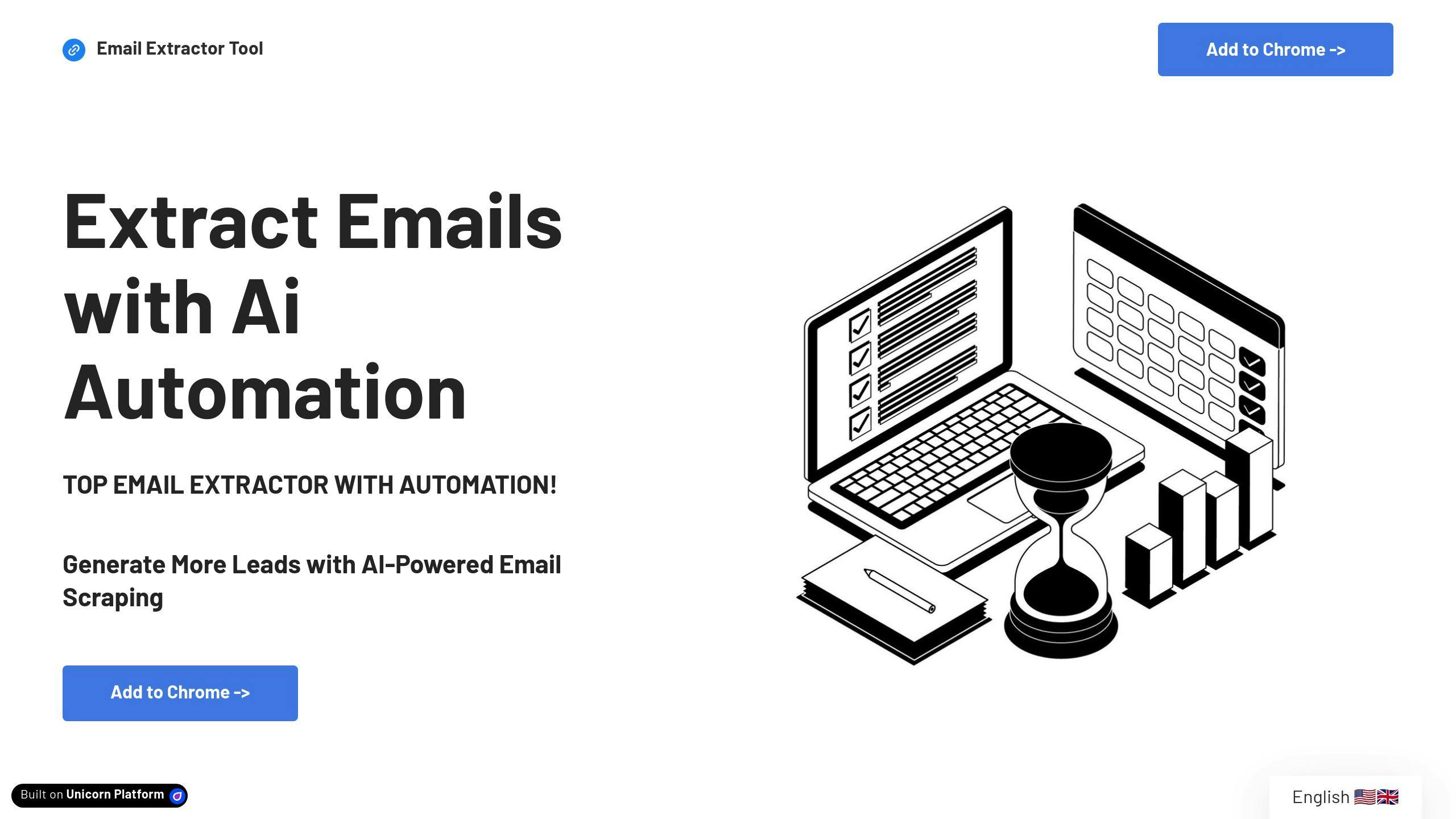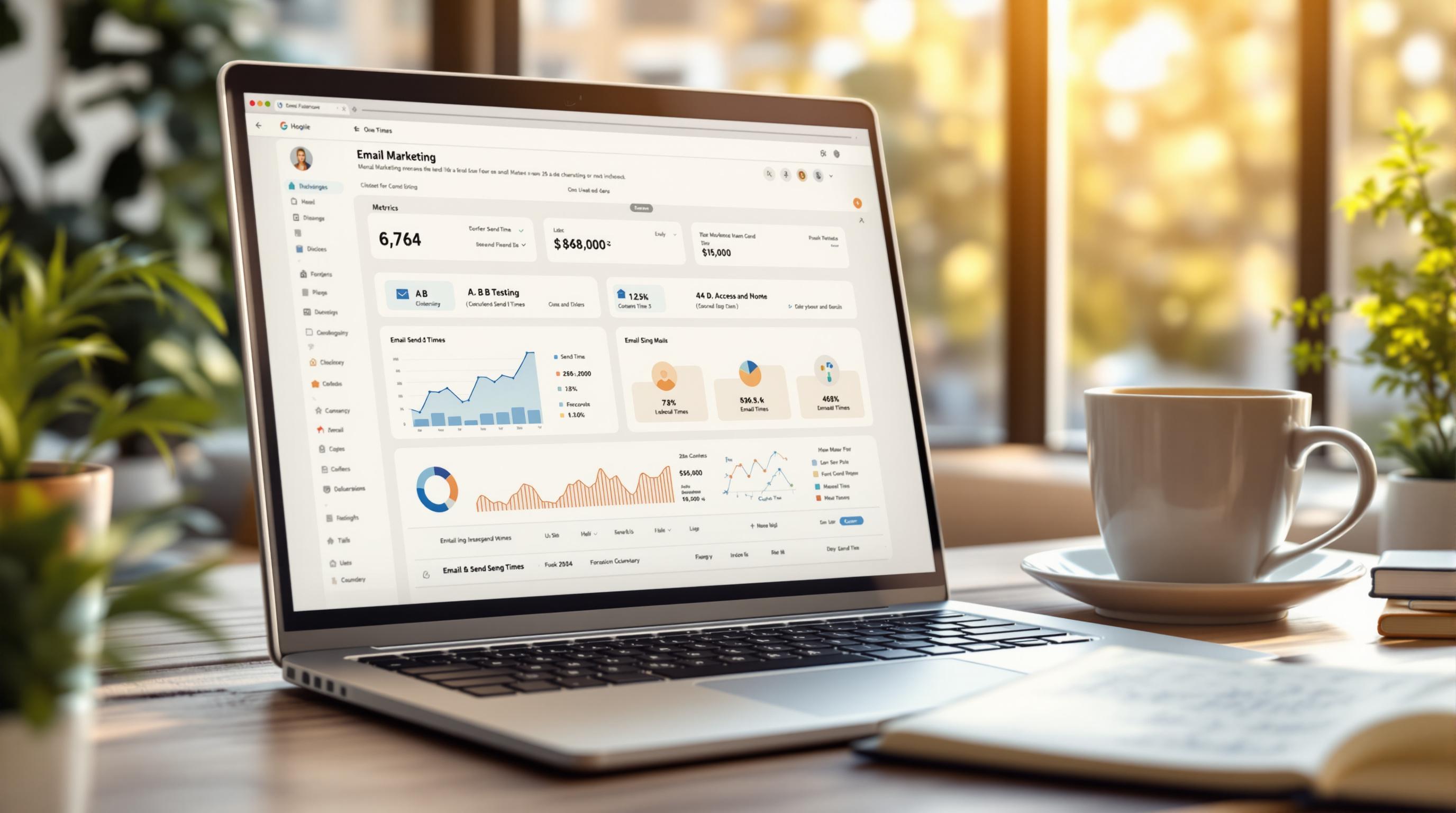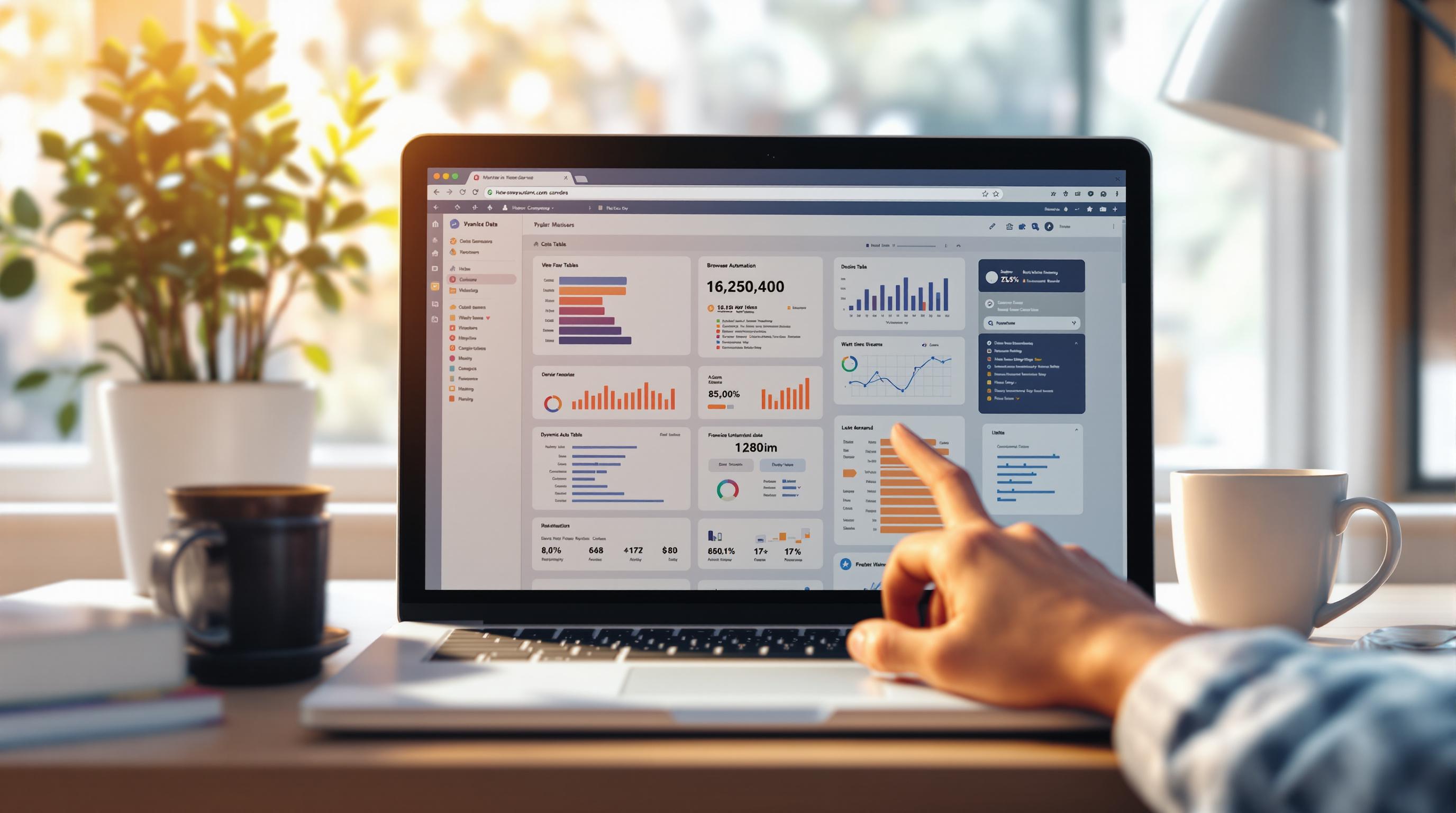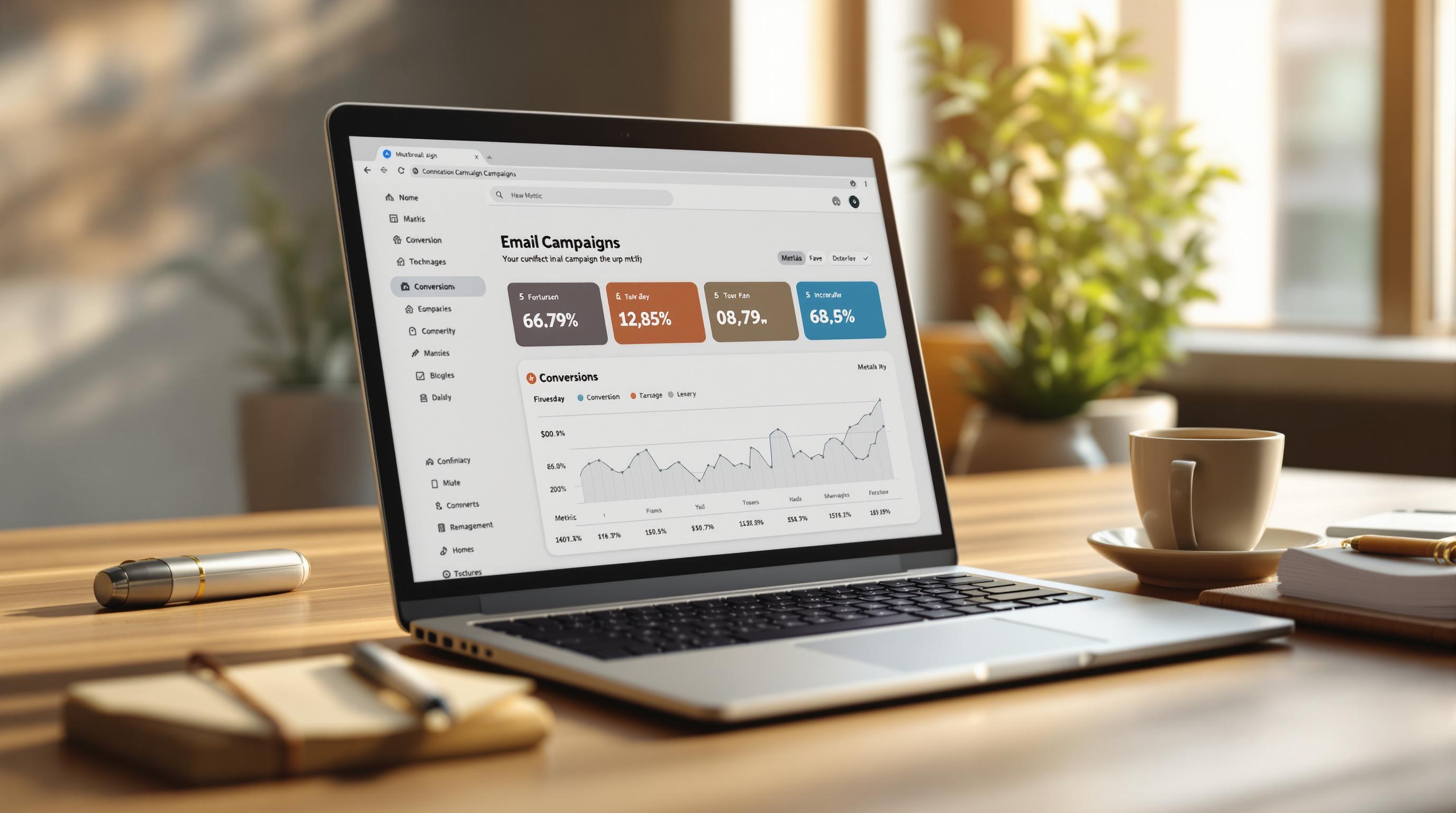Want better cold email results? Start with your layout. A/B testing email layouts can improve open rates, click-throughs, and responses by focusing on key elements like subject lines, CTA placement, and readability. Here's what you need to know:
- Why Layout Matters: Clear structure boosts engagement. Test subject lines, body formatting, and CTA positioning to find what works.
- How to Test: Use A/B testing with equal audience groups. Change one element at a time - track open, click-through, and response rates.
- Key Metrics: Aim for a 15-20% lift in open rates, 10-15% in click-throughs, and 5-10% in responses.
- Tools: Use automation, like the Email Extractor Tool, to build test groups and streamline the process.
Start testing now to create layouts that drive results.
Setting Up Email Layout Testing
Setting up email layout testing requires a focused approach to achieve measurable improvements. Here's how to create an effective framework for your cold email campaigns.
Setting Clear Testing Goals
Define specific, measurable goals that align with your campaign objectives. Pay attention to metrics that directly reflect the success of your layout testing:
| Goal Type | Target Metric | Example Benchmark |
|---|---|---|
| Engagement | Open Rate | 15-20% improvement |
| Action | Click-Through Rate | 10-15% increase |
| Conversion | Response Rate | 5-10% uplift |
Stick to one main metric at a time to keep your testing process focused and straightforward.
Choosing Elements to Test
Zero in on email components that are known to influence engagement. Research from Revnew [2] highlights which elements tend to have the biggest impact:
| Element | Impact Level | Testing Focus |
|---|---|---|
| Subject Lines | High | Length, personalization, urgency |
| Header Design | Medium | Branding placement, size, color |
| Body Structure | High | Paragraph length, spacing, formatting |
| CTA Placement | Critical | Position, design, surrounding space |
| Visual Elements | Medium | Images, icons, formatting |
Start with high-impact areas like subject lines and body structure. Test one element at a time to isolate its effect and ensure your changes align with your primary goals. Testing should be an ongoing process, using data to refine and improve your layouts.
Once you've identified what to test, the next step is to implement a structured A/B testing strategy.
Steps for Email Layout A/B Testing
A/B testing your email layouts involves a structured process to ensure accurate and actionable results. Here's how to effectively test your cold email designs.
Dividing Your Email List
Start by splitting your email list into two equal and balanced groups. This ensures that any differences in performance are due to layout changes, not audience variations. For instance, if you're targeting web developers, both groups should have similar distributions of experience levels and roles [4].
| Group Characteristics | Group A | Group B |
|---|---|---|
| List Size | 50% of total | 50% of total |
| Audience Characteristics | Similar demographics and roles | Similar demographics and roles |
| Company Size Range | Evenly distributed | Evenly distributed |
Once your groups are evenly divided, you can move on to creating and sending test emails based on specific layout changes.
Designing and Sending Test Emails
Test only one layout element at a time to maintain clarity in your results. Keep branding consistent across versions and focus on impactful variations:
| Test Element | Version A | Version B |
|---|---|---|
| Subject Line | Includes an industry-specific statistic | Features a personalized greeting |
| CTA Placement | Positioned at the top of the email | Positioned at the bottom of the email |
"Personalized subject lines with industry-specific statistics drive higher engagement rates, according to Revnew [2]."
After sending the test emails, track their performance to determine which layout performs better.
Evaluating Test Results
Measure key performance metrics to identify the winning layout:
| Metric | Target Improvement (Timeframe) |
|---|---|
| Open Rate | 15-20% increase (5-7 days) |
| Click-Through Rate | 10-15% boost (5-7 days) |
| Response Rate | 5-10% rise (7-10 days) |
Stick to these metrics to stay focused on your goals. For reliable testing, ensure each group includes at least 100 recipients and run the test for at least a week [4]. This approach will give you clear insights into what works best for your audience.
sbb-itb-8abf799
Improving and Expanding Email Layout Strategies
Using the Best Layout
Once you've identified a layout that works well through A/B testing, apply it thoughtfully across your cold email campaigns.
| Layout Element | How to Use It | Expected Results |
|---|---|---|
| Subject Lines | Keep them short and personalized | 15-20% higher open rates |
| CTA Placement | Position based on past performance | 10-15% boost in click-through rates |
| Visual Elements | Use proven design patterns | Better readability and response |
Stick to the successful version of your layout while ensuring your message and branding stay consistent [1]. However, don't stop there - long-term success depends on revisiting and refining your approach regularly.
Continuous Testing for Improvement
Even with a strong layout, regular testing is key to keeping your campaigns effective as audience preferences and market trends shift [4].
Here are some areas to focus on:
| Testing Element | How Often to Test | Metrics to Watch |
|---|---|---|
| Subject Line Variations | Every two weeks | Open rates, spam complaints |
| CTA Placement & Design | Monthly | Click-through rates, conversions |
| Content Layout | Every three months | Time spent reading, response rates |
For better results, tweak one element at a time. This helps you measure the exact impact of each change. Keep your testing process effective by:
- Running tests for at least 7-10 days to collect meaningful data.
- Using a sample size of at least 100 recipients per group.
- Tracking metrics consistently and documenting which layouts perform best.
Audience preferences can change over time. What works now might lose effectiveness later, so ongoing testing is essential to keep engagement rates high [4].
Tools for Improving Email Campaigns
AI-powered tools make managing and testing email campaigns easier, especially when it comes to organizing email lists for layout experiments.
Email Extractor Tool - Extract Emails with AI Automation

The Email Extractor Tool simplifies building email lists for A/B testing using AI automation. This Chrome extension ensures accurate testing by collecting high-quality email addresses and adapting to different testing volumes.
Here’s how this tool helps with layout testing:
- Automatically gathers reliable email addresses for testing purposes.
- Exports collected emails in CSV format for easy segmentation.
- Adjusts email extraction to fit your testing requirements.
Tips for getting the most out of this tool:
- Create separate audience groups for layout experiments.
- Use automation features to maintain email quality.
- Build specific lists tailored to your test variations.
Conclusion: Key Points on Email Layout Testing
Overview of Testing Steps
Testing email layouts effectively means basing decisions on performance data. Start by defining clear goals and identifying elements that influence engagement. As QuickMail puts it:
"A/B testing is a powerful technique for optimizing your cold email campaigns" [1]
Here are three critical areas to focus on:
- Subject Line Optimization: Keep it between 1-8 words for better results [3].
- Layout Simplicity: Minimize visual distractions to boost readability [1].
- Responsive Design: Make sure your emails work well on all devices [1].
Using Tools and Automation
Automation tools like the Email Extractor Tool can simplify the testing process. Its AI-driven features can:
- Build targeted, high-quality test groups for different layout versions.
- Scale your testing efforts without losing accuracy.
For the best outcomes, pair these tools with ongoing testing. Use metrics such as open rates and click-through rates to fine-tune your layouts. This combination of consistent testing and smart tools ensures your email campaigns remain effective over time.
Focusing on data-backed decisions while keeping the design user-friendly will help you create emails that deliver results.



